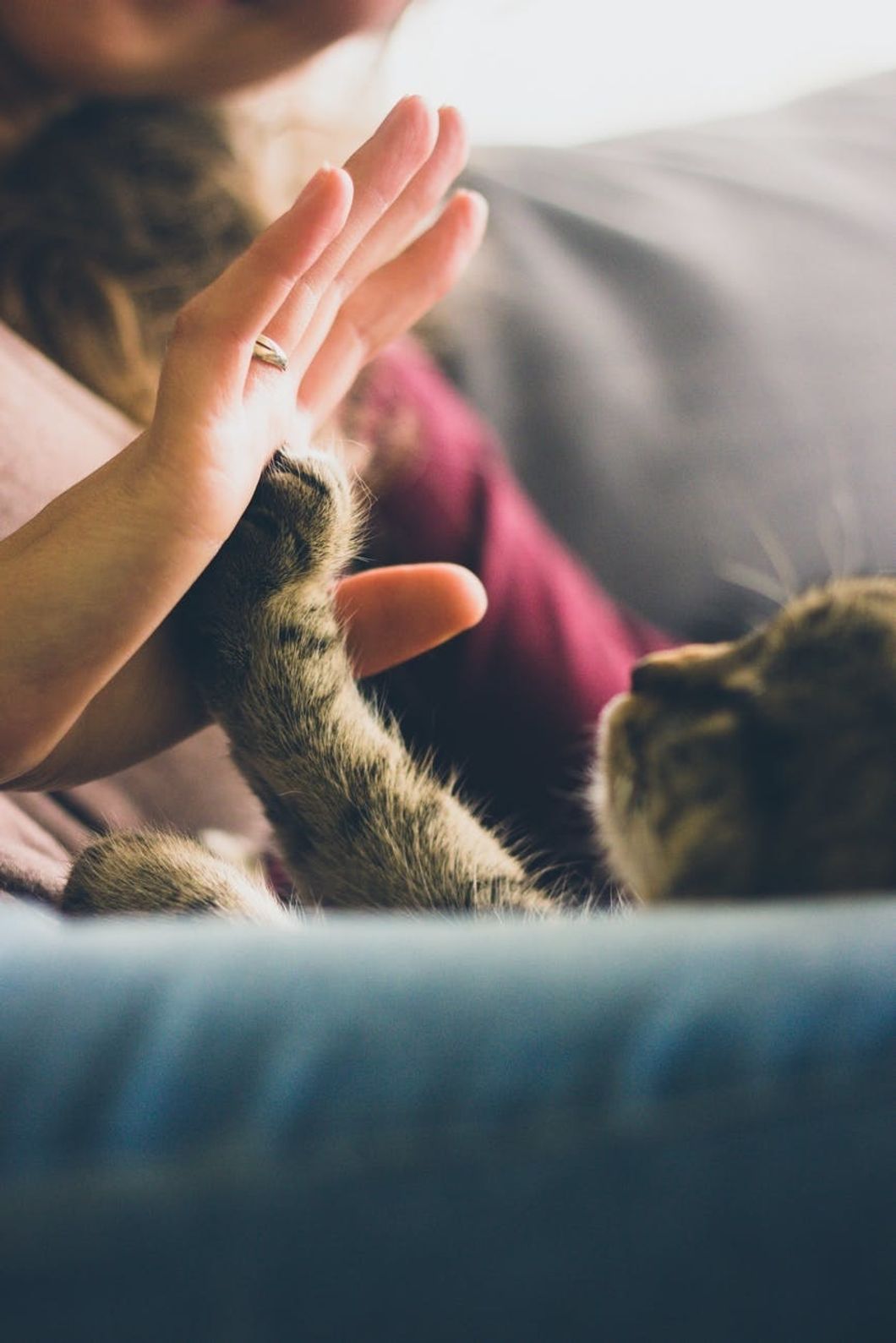Before I dive in, I'd like to mention that this is an active issue going on in the animal cruelty world right now. It's an ongoing battle between veterinarians and animal rights activists. Some states ban declawing and other's don't. In some places, it's all up to the veterinarian and if they allow it to be done. Nonetheless, even if this affects you or not, declawing is an inhumane procedure that shouldn't be tolerated or upheld.
What is declawing?
For some simple answers and questions you may have, you can go here.
Basically, declawing is surgically amputating the 'finger' bones off of a cat's paw. It's NOT simply trimming the nails of a cat. This procedure is not only invasive but extremely dangerous. It can cause serious physical and emotional damage to a cat afterward. Issues that usually can't be resolved or get worse with time.
Many people declaw their cats to save their furniture from being scratched up or because their cat has become aggressive. But those are never reasons to put a cat's health and wellbeing at risk. If you care too much about your furniture or aren't prepared to face some of the battles that come with owning a cat (or any pet, for that matter), then you shouldn't get one. There are a lot of things to consider before getting a cat and it's important to go through them so you don't even have to put yourself in a position to think about declawing. It's not a solution!
While it's easy to see declawing as an issue that has nothing to do with you or not really that important, there are many cats and cat owners that have suffered after going through with declawing. Telling their stories is important and helps raise awareness.
Take new cat owner Karen Whitaker and her cat, Sasha.
After her cat destroyed many pieces of furniture from scratching and showed no signs of stopping even with Karen's anti-scratching methods, she decided to have Sasha declawed. As a first-time pet owner who had done little research beforehand, Karen went through with the surgery.
But afterward, Sasha developed a medical issue due to the imbalance, or weight shift that occurs when the last digit of a cat's finger is amputated. In Sasha's case, the longest digit on each paw reacted badly to being walked on by creating more bone. Karen had to schedule another appointment to amputate the regrown bone on both paws up to the next joint. When she insisted upon being with her cat overnight after surgery, she realized why a vet will not send a cat home the night after a declaw.
The reason? It's pure torture.
A few months later, Karen went back to the vet to have a new radiograph of her cat's paws and learned that another digit may need to be amputated from also pushing through the pad. She noted that we don't hear about all the cats that have trouble following a declaw because their owners have no way of knowing the cat is in pain - or they are as embarrassed as Karen is that they put their cat through something that is actually quite inhumane. Karen says she's disgusted with herself for thinking so selfishly.
This issue is personal to me, since I was forced to make a declawing decision for my own cat.
I've had my cat Waffles since I was in eighth grade. She was a family pet. While my brother didn't show much interest, my mom and I loved her.
Several years went by with no issues. Sure, she scratched on some furniture and we had to teach her not to chase after our feet as we went up the stairs, but those were minor problems.
The problem came when my mom recently introduced my cat to her new fiancee. As a cat who never interacted socially with other people besides my mom and brother, this was extremely new for her and Waffles didn't take well to him. It makes sense why she would act out and try to defend the territory she's had to herself for the past six years.
Unfortunately, my mom didn't really understand why this was happening. Or maybe she did but didn't want to tolerate it anymore. Since I was away at college, I couldn't do much to help with Waffles acting out.
This caused a lot of tension between my mom and me. She debated on getting her declawed or giving her away to a shelter. It was scary hearing all of this and it was out of my control. I would try sending videos or tips on how to help Waffles get acclimated to a new person and tried to explain that it takes a lot of time and patience. But my mom was fed up. When I came home for spring break, she had already made the appointment and offered me to come with her.
I strongly refused on the offer and fought against Waffles getting declawed. If I'm being honest, it was pretty ugly. It resulted in my mom and I having a tug-of-war battle over my cat. I don't think she realized how strongly I felt about declawing, but she definitely knew afterward.
In the end, Waffles and I had to move out of my mom's house and into my dad's place. This was a very hard transition for us both, but ultimately the best one.
Moral of the story?
It's the responsibility of a pet owner to look out for their pet's wellbeing. I am my cat's voice when it comes to things like declawing and her health. All I want to do is keep my little queen - the small, sassy, affectionate animal who has been at my side and helped me mentally through hard times - safe. That's my goal when it comes to her and I would never jeopardize that for the sake of some furniture that can be replaced.






















